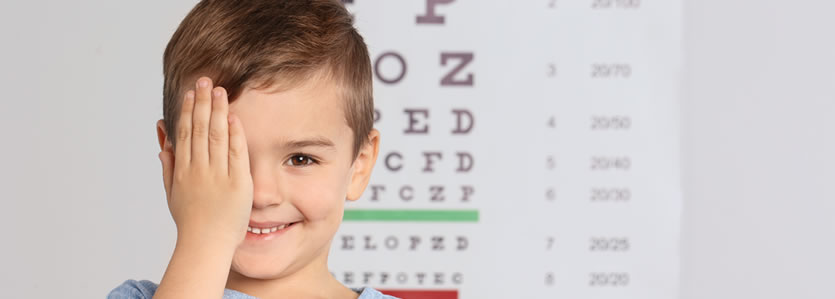Strabismus
Strabismus is an abnormality of the position of the eyes, where the eyes are not focused on the same point. It usually occurs in childhood, but can also occur in adults. We are only talking about ‘normal’ strabismus, in which the eye muscles function normally. This form of strabismus occurs in 3-5% of the population. When both eyes are not focused on the same point, double vision occurs. Cross-eyed children have the ability to suppress the image coming from the eye with the abnormal position in their brain (suppression occurs). If the same eye is always crossed and suppressed, this eye can become lazy (amblyopic). The eye can no longer see clearly and the person cannot see depth. The main reason to detect strabismus at a young age (2-6 years) is to discover a possible lazy eye in time and to treat it with a high chance of success. After the age of 7, a lazy eye can no longer be treated successfully.
Causes and consequences
To gain insight into the causes and consequences of strabismus, it is important to know that people see with both eyes. The images from both eyes are combined into one image in the brain. This ability to see with two eyes develops in the first six to seven years of the child’s life. If the normal development of vision with two eyes is disrupted, strabismus may occur.
Factors that may play a role in the development of strabismus include:
- hereditary predisposition;
- or medical problems in the period around birth;
- The possible prescription of the glasses in the eyes can also contribute to the development of strabismus. High farsightedness is a risk factor for developing strabismus;
- a large difference in strength between the two eyes can lead to disruption of vision with both eyes.
The lazy eye (Amblyopia)
When strabismus develops at a young age, double vision is rarely the case. The double image is suppressed in the brain. If the image from the same eye is suppressed for a period of time, the sharp vision of this eye does not develop properly and vision deteriorates, because the relevant brain pathways lag behind in their development due to the suppression. This is called a lazy eye. A lazy eye can develop at a very young age and does not go away on its own. However, it can be remedied if treatment is started in time, in any case before the age of six, but preferably earlier. After the age of seven, the visual brain pathways can hardly or not at all recover.
Symptoms and diagnosis
A significant strabismus deviation is clearly visible. But there are also small strabismus abnormalities that are not or hardly noticeable and therefore appear less serious. However, the consequences are the same, but a small deviation can only be discovered through targeted research. It is possible that the abnormality has existed for a long time and that it is a case of a very visually impaired lazy eye. If strabismus only occurs at an older age, the chance of a lazy eye is small. In that case, the image of the abnormal eye can be suppressed less easily. Double vision will then occur. The child often closes one eye, holds the hand over the eye or complains of double vision. Due to reduced depth perception, the child may also suffer from uncertain movements: this manifests itself in grasping, missteps or poor ability to estimate distance during ball games.
Diagnosis
At many clinics for infants and toddlers, the eyes are checked according to a fixed examination program. If the office doctor has doubts about the position of the eyes or the quality of vision, he will refer the child to the ophthalmologist/orthoptist. The ophthalmologist/orthoptist conducts extensive research into the position and cooperation of the eyes in young children. Eye movements are also examined and visual acuity is determined eye by eye. The ophthalmologist/orthoptist places drops in the eyes to dilate the pupils and to switch off the focusing function. This allows the ophthalmologist/orthoptist to view the eyes from the inside and see whether the eyes are healthy. It is also determined whether glasses correction is required. The drops usually wear off within a day.
Treatment
In the case of a lazy eye, the child can be treated for this up to the age of 7, often by taping the good eye for several hours a day. Wearing adequate glasses for one or both eyes can also be important.
This stimulates the lazy eye and the brain pathways to develop properly, so that there is no permanent untreatable visual impairment for the rest of the child’s life.


